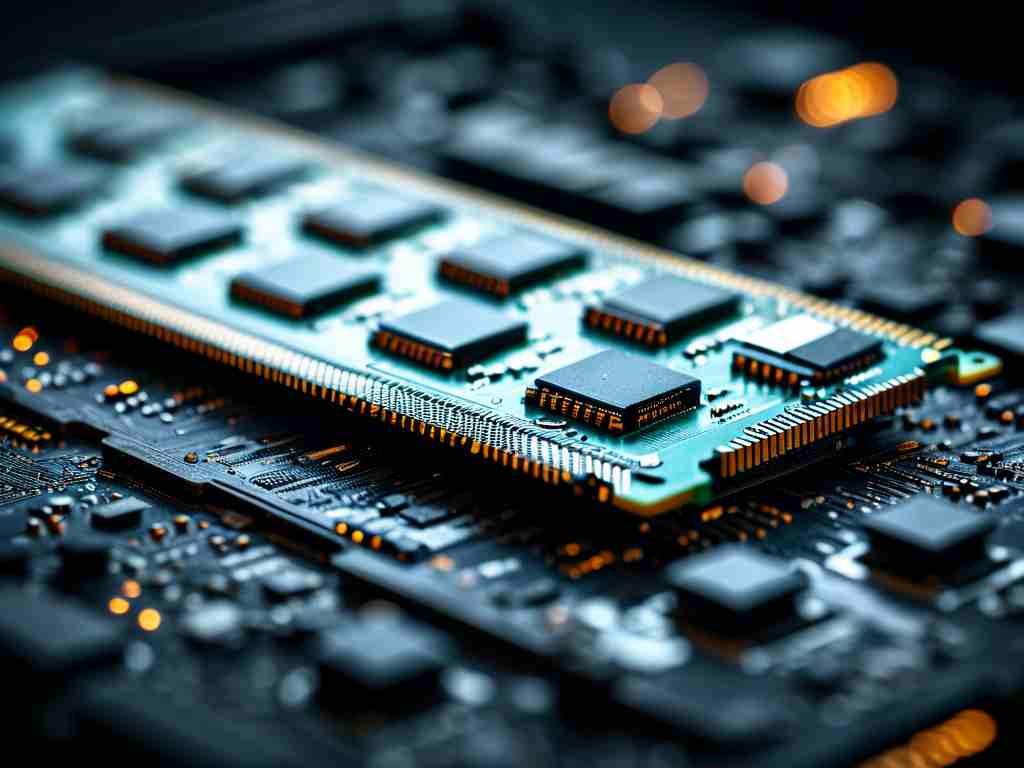Modern computing systems rely on memory modules to handle data operations, but few users understand how these components are physically structured. A critical question arises: how many integrated circuit chips does a typical memory module contain? This article explores the technical considerations behind chip quantity determination and its practical implications.

Fundamental Architecture
Memory modules utilize dynamic random-access memory (DRAM) chips arranged in parallel configurations. Each chip contributes to the module's total capacity through coordinated data transfer. The base calculation involves dividing the module's total storage by individual chip density. For example, an 8GB module using 1Gb (gigabit) chips requires 64 chips (8GB × 8 bits/byte ÷ 1Gb = 64).
Density Variations
Chip quantities inversely correlate with semiconductor manufacturing advancements. Early 256MB DDR modules contained 18 chips (16 for data + 2 for error correction), while modern 32GB DDR5 modules might use just 8 chips due to higher-density 16Gb dies. This progression follows Moore's Law, where doubling transistor counts every two years enables fewer chips per module.
Channel Configuration Impact
Memory controllers access chips through multiple channels to increase bandwidth. A dual-channel 16GB module might split 8GB across two 8-chip groups, while quad-channel designs distribute capacity across four 4-chip clusters. This physical arrangement affects both performance characteristics and visual chip distribution patterns.
Error Correction Considerations
ECC (Error-Correcting Code) modules add redundant chips for data integrity. A standard ECC DDR4 module contains 9 chips per 64-bit channel instead of 8, with the ninth chip storing parity information. For a 72-bit wide module (64 data + 8 ECC), this translates to 18 chips for dual-channel configurations versus 16 in non-ECC equivalents.
Manufacturing Practicalities
Physical space constraints and thermal requirements influence maximum chip counts. Consumer DDR4 modules typically carry 8-16 chips per side, while specialized high-capacity modules may stack chips vertically using 3D packaging. The JEDEC standard specifies maximum dimensions (133.35mm for DIMMs) that limit horizontal arrangements.
Real-World Calculation Example
Consider a 16GB DDR4-3200 module:
- Convert GB to gigabits: 16 × 8 = 128 gigabits
- Divide by chip density (assume 8Gb per chip): 128 ÷ 8 = 16 chips
- Add ECC overhead if applicable: 16 + 2 = 18 chips
Future Trends
Emerging technologies like TSV (Through-Silicon Via) and advanced node shrinkage (5nm and below) continue to reduce chip counts while increasing capacities. Samsung's 512GB DDR5 module prototypes use just 36 chips through 16nm 32Gb dies, demonstrating this trajectory.
Understanding chip quantities helps engineers optimize memory subsystem designs and enables consumers to evaluate module quality through physical inspection. As densities increase, chip counts will keep decreasing, but the fundamental relationship between capacity and semiconductor technology remains pivotal to memory evolution.


